88 Objects total: One star, Four gas giant planets, Four terrestrial planets, Three dwarf planets, 21 moons, Four asteroids, and 51 Trans-Neptunian Objects (TNOs)
Best links, fun photos and great videos. Free music, Share, discover, bookmark, and read stuff that's important to you.
Friday, March 30, 2007
Thursday, March 29, 2007
Wednesday, March 28, 2007
Reinventing the Tea Bag

I was at Whole Foods yesterday doing some tea shopping (really… I ran out) and noticed a few kinds from Ineeka![]() . This is not a company I had tried before (I generally drink Ito En) but the packaging was so cool I could not resist. I ended up with the Darjeeling, but there were a few other options available.
. This is not a company I had tried before (I generally drink Ito En) but the packaging was so cool I could not resist. I ended up with the Darjeeling, but there were a few other options available.
While the tea is good, I have to admit I was more impressed with the product design. The tea is not loose, rather it comes in 14 single-serving packages. Nothing too unique, until you check out the bags…
The bags have paper arms on the sides that fold out in order to make them into a single-use filter. In essence it is not that different from the function of a normal tea bag but now the tea inside is effective loose because before placing the tea in your cup you tear off the top and the let the leaves float around in the open bag while it steeps. By opening the top you are also able to pour the hot water directly onto the leaves without them scattering, which helps to make a fine beverage. At $9.99 for 14 bags the tea is rather expensive, but if you appreciate fine packaging and brilliant product design, it is worth checking out Ineeka.

Top 10 Largest Social Bookmarking Sites March 2007
Here are the top 10 largest social bookmarking sites ranked by a combination of Compete and Quantcast data. For each site, we show unique U.S. monthly visitor data as well as respective rank. For entries where a wide range exists between the two data sets the highest numbers were used for ranking purposes. Although no traffic metrics are completely accurate we do believe the data below to be useful for gauging relative audience size.
 10 | ShoutWire.com
10 | ShoutWire.com
53,255 Unique Monthly Visitors (United States) - Rank: 32,786 - Compete
52,435 Unique Monthly Visitors (United States) - Rank: 34,764 - Quantcast
eBizMBA's Top 10 Largest Social Bookmarking Sites | Posted 3/28/2007  9 | Newsvine.com
9 | Newsvine.com
--87,450 Unique Monthly Visitors (United States) - Rank: 20,914 - Compete
102,727 Unique Monthly Visitors (United States) - Rank: 18,669 - Quantcast
eBizMBA's Top 10 Largest Social Bookmarking Sites | Posted 3/28/2007  8 | furl.net
8 | furl.net
127,263 Unique Monthly Visitors (United States) - Rank: 14,717 - Compete
--74,831 Unique Monthly Visitors (United States) - Rank: 25,092 - Quantcast
eBizMBA's Top 10 Largest Social Bookmarking Sites | Posted 3/28/2007  7 | BlinkList.com
7 | BlinkList.com
132,592 Unique Monthly Visitors (United States) - Rank: 14,104 - Compete
166,504 Unique Monthly Visitors (United States) - Rank: 11,550 - Quantcast
eBizMBA's Top 10 Largest Social Bookmarking Sites | Posted 3/28/2007  6 | Slashdot.org
6 | Slashdot.org
260,008 Unique Monthly Visitors (United States) - Rank: 7,274 - Compete
249,568 Unique Monthly Visitors (United States) - Rank: 7,606 - Quantcast
eBizMBA's Top 10 Largest Social Bookmarking Sites | Posted 3/28/2007  5 | reddit.com
5 | reddit.com
433,070 Unique Monthly Visitors (United States) - Rank: 4,311 - Compete
100,398 Unique Monthly Visitors (United States) - Rank: 19,070 - Quantcast
eBizMBA's Top 10 Largest Social Bookmarking Sites | Posted 3/28/2007  4 | StumbleUpon.com
4 | StumbleUpon.com
390,523 Unique Monthly Visitors (United States) - Rank: 4,793 - Compete
386,470 Unique Monthly Visitors (United States) - Rank: 4,647 - Quantcast
eBizMBA's Top 10 Largest Social Bookmarking Sites | Posted 3/28/2007  3 | del.icio.us
3 | del.icio.us
909,091 Unique Monthly Visitors (United States) - Rank: 1,965 - Compete
923,442 Unique Monthly Visitors (United States) - Rank: 1,671 - Quantcast
eBizMBA's Top 10 Largest Social Bookmarking Sites | Posted 3/28/2007  2 | Netscape.com
2 | Netscape.com
5,832,349 Unique Monthly Visitors (United States) - Rank: 179 - Compete
5,300,000 Unique Monthly Visitors (United States) - Rank: 159 - Quantcast
eBizMBA's Top 10 Largest Social Bookmarking Sites | Posted 3/28/2007  1 | digg.com
1 | digg.com
12,156,271 Unique Monthly Visitors (United States) - Rank: 61 - Compete
--4,800,000 Unique Monthly Visitors (United States) - Rank: 180 - Quantcast
eBizMBA's Top 10 Largest Social Bookmarking Sites | Posted 3/28/2007
Tuesday, March 27, 2007
Aerogel - best insulator and lowest density solid
Aerogel (also called 'frozen smoke' because of its hazy blue appearance), is a truly remarkable material. It is the lightest and lowest-density solid known to exist, and holds an unbelievable 15 entries in the Guinness Book of World Records, including best insulator and lowest density solid. Aerogel is composed of 99.8% air and is chemically similar to ordinary glass.

Sunday, March 25, 2007
10 Things You Never Knew About SEX
1. The typical lovemaking session lasts around 15 minutes: roughly 10 to 12 minutes of foreplay and around 3 to 5 minutes of intercourse.
2. Humans aren't the only horny members of the animal kingdom doing it just for fun. Dolphins and a type of chimpanzee called the bonobo have also been observed engaging in sexual activity when they are not in their natural reproductive cycles.
3. While Viagra has made erectile dysfunction (affecting 10 to 12 percent of men) a household phrase, the opposite problem -- premature ejaculation -- is more common (affecting 24 to 27 percent of men). The U.S. Food and Drug Administration is currently reviewing a drug called dapoxetine as a cure for this problem.
4. Crank up that thermostat... orgasms may be more intense in warmer conditions. The degree of vasocongestion, reddening or darkeing of the skin known as the "sex flush," is both more common in warmer temperatures and an indication of how intense an orgasm may be.
5. If a woman experiences orgasm during sex, she is more likely to become pregnant, since orgasmic spasms in pelvic muscles help move sperm up the vaginal canal to the uterus.
6. Homosexuality is not unique to humans. Many species have been observed engaging in homosexual activity, and in fact male bats have the highest rate of homosexuality of all mammals.
7. On any given day 400,000,000 people around the world -- 1 in 17 of us -- will have sexual intercourse. Broken down further, 4,000 people are having sex at any given time.
8. Sex cures headaches. Endorphins released into our bloodstream when we have sex not only give us pleasure but also act as painkillers. Useful information to whip out the next time your partner uses a headache as a reason to say no.
9. Many elderly can and do have frequent sex. At age 70, 73% of males are still potent, and 30% of women 80 or older have still have sex.
10. 70% of women would rather eat choclate than have sex.
Sources: The Kinsey Report, Wikipedia, American Urology Association
The 20 Greatest Historical Myths
It is said that those who don't know history are condemned to repeat it - and as any history buff can tell you, much of history is something you would NOT want to repeat. However, many well-known historical "facts" are myths, with no basis in fact. Here (and in the next few segments) are 20 of the most common, which have misled and misinformed people for years, decades, or centuries.
If more people knew the facts, a few of the great history-makers would be recognised (anyone heard of Ub Iwerks?), some famous people would stop taking so much credit, and we would stop blaming apples for everything! Let's start with the following misconceptions...
20. Eve ate a bad apple
An apple a day might keep the doctor away, but they have still had bad publicity as the "forbidden fruit" that Eve tasted in the Garden of Eden, thereby making life difficult for all of us. Yet nowhere in the biblical story of Adam and Eve is an apple mentioned. It is simply called "the fruit of the tree that is in the middle of the garden" (Genesis 3:3). OK, it COULD have been an apple, but it might just as well have been an apricot, a mango, or any other sort of fruit.
19. Newton was hit by an apple
Apples continued to get bad press with the famous story that scientist Sir Isaac Newton was under a tree, minding his own business, when an apple fell on his head. Just as well it provided him the inspiration for the laws of gravity, or the poor apple would never be forgiven! But while the falling apple is a good story, it probably never happened. The story was first published in an essay by Voltaire, long after Newton's death. Before that, Newton's niece, Catherine Conduitt, was the only person who ever told the story. It was almost certainly an invention.
18. Walt Disney drew Mickey Mouse
One of the world's most famous fictitious characters, Mickey Mouse, is credited to Walt Disney. However, Mickey was the vision of Disney's number one animator, Ub Iwerks. Disney, never a great artist, would always have trouble drawing the character who made him famous. Fortunately for him, Iwerks was known as the fastest animator in the business. He single-handedly animated Mickey's first short film, Plane Crazy (1928), in only two weeks. (That's 700 drawings a day.) But give some credit to Disney - when sound films began later that year, he played Mickey's voice.
17. Marie Antoinette said "Let them each cake"
In 1766, Jean Jacques Rousseau wrote of an incident he recalled from some 25 years earlier, in which "a great princess" (name unknown) was told that the country people had no bread. "Then let them eat cake," she replied. When Rousseau wrote of this, Marie Antoinette was an 11-year-old child in Austria. The French Revolution would not begin for another 23 years. The myth that she spoke these infamous words was probably spread by revolutionary propagandists, to illustrate her cold indifference to the plight of the French people.
In the next chapter of this list, we uncover a tall tale about Napoleon, and find out how witches did NOT die, whatever you might have heard...
16. The Great Train Robbery was the first feature film
When it was released in 1903, "The Great Train Robbery" pioneered several techniques, includes jump cuts, medium close-ups and a complex storyline. But the first feature film? It was only ten minutes long! Even most short films are longer than that. The first feature-length film was a 100-minute Australian film, "The Story of the Kelly Gang", released three years later. Even if you think of a feature film as the "feature" of a cinema program, the title would go to one of a number of French films made during the 1890s (but I won't name one, as that could cause any number of arguments).
15. Van Gogh sliced off his ear
Van Gogh is known as the archetypal starving artist, only selling one painting in his lifetime, and - in a quarrel with Gauguin - slicing off his ear, not long before committing suicide. Though he did face a tragic end, and his own paintings sold poorly, it is worth noting that he spent most of his life teaching and dealing art. He only spent eight years of his life painting, which helps to explain why he didn't starve to death. Also, he didn't slice off his entire ear, just a portion of his left lobe. Painful, but not nearly as bad as you might have thought.
14. Witches were burned at stake in Salem
The Salem (Massachusetts) witch trials of 1692 led to the arrests of 150 people, of whom 31 were tried and 20 were executed. But just as these trials were based on ignorance, there are many misconceptions about them. For starters, the 31 condemned "witches" were not all women. Six of them were men. Also, they were not burned at stake. As any witch-hunter would know, a true witch could never be killed by this method. Hanging was the usual method - though one was crushed to death under heavy stones.
13. Napoleon was a little corporal
Some people believe that Napoleon's domineering ambitions were to compensate for being so physically small. Not so. True, Napoleon was called Le Petit Corporal ("The Little Corporal"), but he was 5 feet, 7 inches tall - taller than the average eighteenth-century Frenchman. So why the nickname? Early in his military career, soldiers used it to mock his relatively low rank. The name stuck, even as he became ruler of France.
12. King John signed the Magna Carta
The Magna Carta (Great Charter) is known as a landmark in history, limiting the power of the King of England and sowing the seeds of democracy. Paintings show King John reluctantly signing the Magna Carta in a meadow at Runnymede in 1215. Fair enough, except for one thing. As well as being a rogue, John was probably illiterate. As anyone could see from looking at one of the four original Magna Cartas in existence, he simply provided the royal seal. No signature required.
11. Walter Raleigh introduced potatoes and tobacco to England
Sir Walter Raleigh - explorer, courtier, privateer - Is one of greatest myth figures ever to come from England. Virtually every reason for his fame is untrue. Was he handsome? According to written accounts, he was no oil painting - though somehow he charmed Queen Elizabeth I, and had a reputation as a ladies' man. Did he lay his cloak across a puddle so that the Queen could step on it? No, that was pure fiction. Most importantly, he didn't return from his visit to the New World (America) with England's first potatoes and tobacco. Though Raleigh is said to have introduced potatoes in 1586, they were first grown in Italy in 1585, and quickly spread throughout Europe (even across the English Channel). Also, though people all over Europe blame Sir Walter for their cigarette addictions, Jean Nicot (for whom nicotine is named) introduced tobacco to France in 1560. Tobacco spread to England from France, not the New World.
10. Magellan circumnavigated the world
Everyone knows two things about Portuguese explorer Ferdinand Magellan. One, he was the first man to circumnavigate the world; and two, during this historic trip, he was killed by natives in the Philippines. Of course, those two things tend to contradict each other. Magellan only made it half-way around the world, leaving it to his second-in-command, Juan Sebastian Elcano, to complete the circumnavigation.
9. Nero fiddled while Rome burned
We all know the story of mad Emperor Nero starting the Great Fire of Rome in 64 AD, then fiddling while the city burned. However, this would have been impossible. For one thing, the violin wouldn't be invented for another 1,600 years. OK, some versions of the story suggest that he played a lute or a lyre - but then, scholars place the emperor in his villa at Antium, 30 miles away, when the fire began. Though he was innocent of this disaster, however, there is much evidence to show that he was ruthless and depraved.
8. Captain Cook discovered Australia
Many Australians will agree that this isn't so - but for the wrong reasons. They will point out that, many years before Cook arrived in Sydney in 1770, Australia had already been visited by Dutchmen Abel Tasman and Dirk Hartog, and an English buccaneer, William Dampier. Of course, it had been previously been discovered some 50,000 years earlier by the indigenous Australians.
But in fairness to Cook, he did discover a new part of the country - and more importantly, this led to the first white settlers (an opportunity that Tasman, Hartog and Dampier didn't take). So let's say that Cook DID discover Australia! Fine, but Cook was actually a Lieutenant when he sailed to the Great South Land. The "captain" rank might be a minor point, but it's certainly inaccurate - and as he is called "Captain Cook" so often that it might as well be his name, it's one worth correcting.
7. Shakespeare wrote the story of Hamlet
William Shakespeare is generally known as the greatest playwright who ever lived, even though most of his plays were not original, but adaptations of earlier stories. "The Tragedy of Hamlet, Prince of Denmark" (1603), probably his most famous play, was based on an ancient Scandinavian story. But while it might not have been the original version of the story, we can safely assume it was the best.
6. America became independent on July 4, 1776
Hold the fireworks! As most American school children (and many non-American ones) are aware, America's founding fathers signed the Declaration of Independence on July 4, 1776. However, the war raged for another seven years before independence from England was finally granted on September 3, 1783. On that day, Britain's George III and US leaders signed the Definitive Treaty of Peace.
5. Edison invented the electric light
Thomas Edison is known as the world's greatest inventor. His record output - 1,093 patents - still amazes us, over a century later. Astonishing, except for one thing: he didn't invent most of them. Most Edison inventions were the work of his unsung technicians - and his most famous invention, the electric light, didn't even belong to his laboratory. Four decades before Edison was born, English scientist Sir Humphry Davy invented arc lighting (using a carbon filament). For many years, numerous innovators would improve on Davy's model. The only problem: none could glow for more than twelve hours before the filament broke. The achievement of Edison's lab was to find the right filament that would burn for days on end. A major achievement, but not the first.
4. Columbus proved that the Earth was round
It was American author Washington Irving, some 500 years after Columbus sailed to America, who first portrayed the Italian explorer as launching on his voyage to prove that the Earth was round, defying the common, flat-earther belief of the time. In fact, most educated Europeans in Columbus's day knew that the world was round. Since the fourth century BC, almost nobody has believed that the Earth is flat. Even if that wasn't the case, Columbus would never have set out to prove that the Earth was round... simply because he didn't believe it himself! Columbus thought that the Earth was pear-shaped. He set sail to prove something else: that Asia was much closer than anyone thought. Even in this, he was wrong. To further besmirch his memory, it should also be noted that he never set foot on mainland America. The closest he came was the Bahamas. Pear-shaped, indeed!
3. Gandhi liberated India
To westerners, Mahatma Gandhi is easily the most famous leader of India's independence movement. He deserves credit for promoting the ancient ideals of ahimsa (non-violence). However, most historians agree that Indian independence was inevitable. Gandhi was just one of several independence leaders. The Indian National Congress was founded as early as 1885, when he was only 16. Gandhi's much-publicised civil disobedience was only a small part in the movement, and some historians even suggest that India would have achieved independence sooner if they had focused on the more forceful methods that they had used 50 years earlier, and which were still advocated by other independence leaders, such as Gandhi's rival Netaji Chandra Bose (who is also revered in India).
2. Jesus was born on December 25
Christmas is meant to celebrate the birth of Jesus, but there is no evidence whatsoever, biblical or otherwise, that He was actually born on that day. Nor is there anything to suggest that He was born in a manger, or that there were three wise men (although, as any nativity play will remind you, three gifts were mentioned). There are differing views as to why December 25 was chosen as Christmas day, but one of the most interesting is that the day was already celebrated by followers of Mithras, the central god of a Hellenistic cult that developed in the Eastern Mediterranean around 100 BC. The followers of this faith believed that Mithras was born of a virgin on 25 December, and that his birth was attended by shepherds...
Which brings us to the number one historical myth - something that is drilled into the heads of nearly all American schoolchildren...
1. George Washington was America's first President
Everyone "knows" that Washington was the first of the (so far) 43 Presidents of the US. However, this isn't strictly the case. During the American Revolution, the Continental Congress (or the 'United States in Congress Assembled') chose Peyton Randolph as the first President. Under Randolph, one of their first moves was to create the Continental Army (in defence against Britain), appointing General Washington as its commander. Randolph was succeeded in 1781 by John Hancock, who presided over independence from Great Britain (see myth #6). After Washington defeated the British at the Battle of Yorktown, Hancock sent him a note of congratulations. Washington's reply was addressed to "The President of the United States". Eight years later, as a revered war hero, Washington himself became America's first popularly elected President - but strictly speaking, the FIFTEENTH President!
Saturday, March 24, 2007
So What Really Is In A McDonald's Chicken McNugget?

Omnivore's Dilemma by Michael Pollan is a fascinating book that details the changing eating habits of Americans. I can't recommend it highly enough. It explains how, over the last 30 years, we have become a nation that eats vast quantities of corn – much more so than Mexicans, the original "corn people."
Most folks assume that a chicken nugget is just a piece of fried chicken, right? Wrong! Did you know, for example, that a McDonald’s Chicken McNugget is 56% corn?
What else is in a McDonald's Chicken McNugget?
Besides corn, and to a lesser extent, chicken, The Omnivore's Dilemma describes all of the thirty-eight ingredients that make up a McNugget – one of which I'll bet you'll never guess. During this part of the book, the author has just ordered a meal from McDonald’s with his family and taken one of the flyers available at McDonald’s called "A Full Serving of Nutrition Facts: Choose the Best Meal for You." These two paragraphs are taken directly from The Omnivore’s Dilemma:“The ingredients listed in the flyer suggest a lot of thought goes into a nugget, that and a lot of corn. Of the thirty-eight ingredients it takes to make a McNugget, I counted thirteen that can be derived from corn: the corn-fed chicken itself; modified cornstarch (to bind the pulverized chicken meat); mono-, tri-, and diglycerides (emulsifiers, which keep the fats and water from separating); dextrose; lecithin (another emulsifier); chicken broth (to restore some of the flavor that processing leeches out); yellow corn flour and more modified cornstarch (for the batter); cornstarch (a filler); vegetable shortening; partially hydrogenated corn oil; and citric acid as a preservative. A couple of other plants take part in the nugget: There's some wheat in the batter, and on any given day the hydrogenated oil could come from soybeans, canola, or cotton rather than corn, depending on the market price and availability.
According to the handout, McNuggets also contain several completely synthetic ingredients, quasiedible substances that ultimately come not from a corn or soybean field but form a petroleum refinery or chemical plant. These chemicals are what make modern processed food possible, by keeping the organic materials in them from going bad or looking strange after months in the freezer or on the road. Listed first are the "leavening agents": sodium aluminum phosphate, mono-calcium phosphate, sodium acid pyrophosphate, and calcium lactate. These are antioxidants added to keep the various animal and vegetable fats involved in a nugget from turning rancid. Then there are "anti-foaming agents" like dimethylpolysiloxene, added to the cooking oil to keep the starches from binding to air molecules, so as to produce foam during the fry. The problem is evidently grave enough to warrant adding a toxic chemical to the food: According to the Handbook of Food Additives, dimethylpolysiloxene is a suspected carcinogen and an established mutagen, tumorigen, and reproductive effector; it's also flammable. But perhaps the most alarming ingredient in a Chicken McNugget is tertiary butylhydroquinone, or TBHQ, an antioxidant derived from petroleum that is either sprayed directly on the nugget or the inside of the box it comes in to "help preserve freshness." According to A Consumer's Dictionary of Food Additives, TBHQ is a form of butane (i.e. lighter fluid) the FDA allows processors to use sparingly in our food: It can comprise no more than 0.02 percent of the oil in a nugget. Which is probably just as well, considering that ingesting a single gram of TBHQ can cause "nausea, vomiting, ringing in the ears, delirium, a sense of suffocation, and collapse." Ingesting five grams of TBHQ can kill.”
Bet you never thought that was in your chicken McNuggets!
(c) Source
Morning Glory Pool


Morning Glory Pool at Yellowstone National Park Wyoming..National Park, attracts some three million visitors every year to experience its many wonders. Yellowstone covers 3,470 square miles, primarily in the northwest corner of Wyoming . Famous for its geysers, hot springs, and free-ranging wild animals, Yellowstone is a seasonal wonder, offering an abundance of activities for all ages and interests.











(c) Source
Top 10 Most Important People on the Web
1. Eric Schmidt, Larry Page, and Sergey BrinExecutives, Google
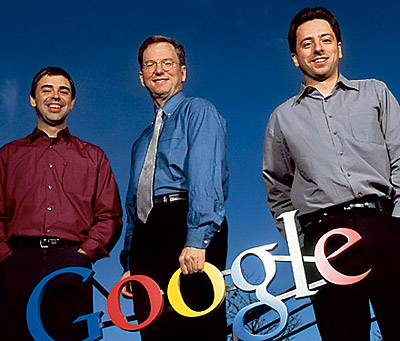
When your stock price can top $500 a share, you're collectively worth $33 billion in cash, and you run the most trafficked search engine on the Internet, you can afford to do, well, pretty much whatever you want. Sergey Brin and Larry Page's little project from Stanford has grown into the Web's most talked-about powerhouse, and one of the few names on this list to have morphed into a verb. Schmidt left Novell to join the board of directors at Google in 2001 and soon became the company's CEO. Having conquered the online advertising world, Google seems to be gearing up for an acquisition spree, its headline-grabbing purchase of YouTube marking a big step toward complete domination of the Web.
2. Steve JobsCEO, Apple
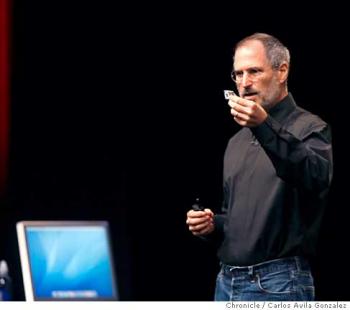
No doubt you're sick of the media bonanza surrounding the every move of Apple's CEO, but when one man's appeal for DRM-free music reverberates around the world, it's hard to ignore the power he wields. Jobs popularized legal music downloads and legal TV and movie downloads. And though the iPhone won't be released for five months, its demonstration at MacWorld Expo suggested that this product might finally popularize Internet browsing on a mobile device.
3. Bram CohenCofounder, BitTorrent
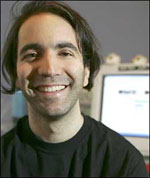
P2P systems like KaZaA and eDonkey are so last year. The future is all about BitTorrent, the brainchild of math wizard and programming wunderkind Bram Cohen. BitTorrent, developed in 2001, has gained in popularity as a way to download large files (like movies) by sharing the burden across hardware and bandwidth. The technology's adeptness at handling large files got Cohen in trouble with the Motion Picture Association of America, which ordered BitTorrent to remove copyrighted content from its network. But that setback hasn't slowed it down. Reportedly, more than a third of all Web traffic now comes from BitTorrent clients. BitTorrent and the entertainment heavyweights have since joined forces. The newly released BitTorrent Entertainment Network launched recently with thousands of industry-approved movies, television shows, games, and songs for sale and rental.
4. Mike MorhaimePresident, Blizzard Entertainment
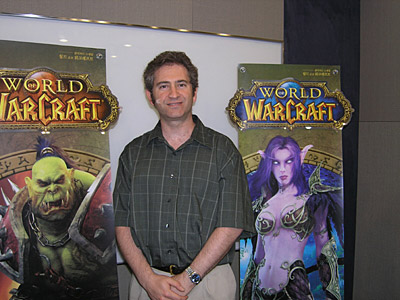
In the world of online gaming, there is World of Warcraft and there is everything else. With 8 million players worldwide, Blizzard earns about $1.5 billion a year on WoW. And each player is breathlessly beholden to Mike Morhaime for the chance--if it ever comes--to obtain that Blade of Eternal Justice. As with Second Life (see #17), entire real-world businesses are based around the game. Unlike Second Life, though, these businesses--which exploit the WoW economy and gameplay--are not entirely welcome.
5. Jimmy WalesFounder, Wikipedia
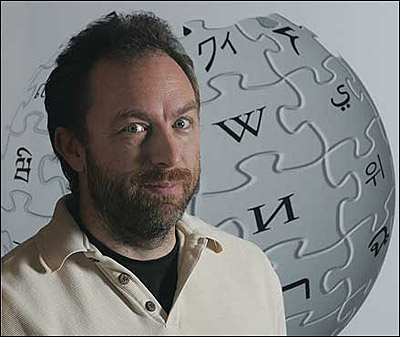
Many onliners treat Internet encyclopedia Wikipedia as their first and last stop in researching a topic; and its user generated content has become so reliable that Nature magazine declared it "close to [Encyclopaedia] Britannica" in accuracy. The site has been cited as a source of information in more than 100 U.S. court decisions since 2004. But its popularity has also made Wikipedia a target for spammers--so much so that Wikipedia temporarily blocked the entire country of Qatar from making edits. To thwart spammers, Wales decided to slap "nofollow" tags on external links, telling search engines to ignore the links in order to avoid artificially inflating the search engine ranking of the link targets. This strategy ensures that Wikipedia's prominence in search results will continue to grow. But Wikipedia may just be the beginning for Wales. He recently launched his own search engine, WikiSeek, which searches only sites mentioned in Wikipedia.
6. John DoerrVenture capitalist, Kleiner, Perkins, Caulfield & Byers

A former salesman for Intel, John Doerr has been the king of Silicon Valley venture capital for 27 years, investing in tech businesses ranging from Sun Microsystems to Amazon.com to Google. Jeff Bezos (see #24) once described Doerr as "the center of gravity in the Internet." He has also put his money behind his politics, backing controversial state ballot initiatives in California involving alternative energy and stem-cell research.
7. Craig NewmarkFounder, Craigslist
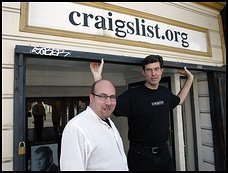
His Web site has no ads, charges absurdly low fees to a small fraction of its visitors, has a ".org" domain, and employs 23 people. Yet despite its humble appearance, Craigslist racked up 14.1 million page views last December and was the 52nd most viewed site last December according to comScore Media Metrix. Newmark's Craigslist has become an addiction for many, who impulsively refresh the listings of free stuff, "rants & raves," and personal ads while shirking their day jobs. Most importantly, it has almost singlehandedly demolished the offline classified advertising business. (In the San Francisco Bay Area alone, one study found, the site drains up to $65 million annually from local newspapers' help-wanted ads.) Take that, old media!
8. Peter LevinsohnPresident, Fox Interactive Media
Fox Interactive Media, owned by Rupert Murdoch's News Corporation, is one of the Web's most powerful entities, controlling 13 sites that range from uber-popular MySpace.com to controversial FoxNews.com. A complement to News Corp's array of traditional film and television properties, this Internet-focused division ranked among the top 10 visited properties in the world in December 2006, according to comScore World Metrix. And there will probably be more to come, as Fox Interactive still has $2 billion in acquisition money to play around with, according to TechCrunch (see #30).
9. Marissa MayerVice president for search products & user experience, Google

Google's product czar oversees the search giant's increasingly diversified list of Web services and tools, such as Google Maps, Google Desktop, and Google Base--an eBay-esque e-commerce service. The first lady of Google joined the company as its first female engineer in 1999 (she was approximately employee #20) and worked on developing Google's now-familiar minimalist look. But don't accuse her of all work and no play; according to Google's Web site, she organizes employee movie nights.
10. Chad Hurley and Steve ChenFounders, YouTube
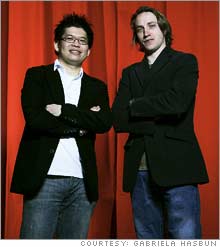
Despite Google's acquisition of the company, YouTube founders Chad Hurley (CEO) and Steve Chen (CTO) look like they'll be shaking things up for some time to come. The Internet video kingpin announced plans to pay users for videos, and it has signed several big-media content partnerships (with MTV, NBC, Warner Music, and others). Fellow co-founder Jawed Karim left the company to pursue a master's in computer science at Stanford University.
(c) source
Friday, March 23, 2007
Thursday, March 22, 2007
How to split post on blogger.com
Your blog's main page usually shows the entire content of each post. If your posts are usually more than 2 paragraphs, then your visitor will find it difficult to quickly find the topic of interest to him because he needs to scroll down a lot. This is where expandable post summaries helped in the old Blogger. This hack serves the same purpose for the new Blogger and more! That is, main page will show only post summaries and when you click "Read more", the full post appears in the main page itself (Peekaboo view)!! I got some requests to do such a hack and I managed to get it working. Later, Hans improved it by adding a "Summary only" link with which you can collapse the post back to summary. Together, we also made the "Read more" link to show up only for the posts that have a summary. This is an amazing hack but you need to be careful while changing your template. If you are not familiar with HTML, I strongly suggest you to get help from somebody who knows HTML while applying this hack. Here are the steps to follow. Step 0: Download and save your template so that you can go back to it if there is any problem with this hack (Important!)
Step 1: Find the </head> tag in your template and add this line before it (if you have not already done so).
<script type='text/javascript' src=
'http://www.anniyalogam.com/widgets/hackosphere.js' />
Step 2: Find the includable called 'post' and copy/paste the changes highlighted in red in this page (Be very careful and avoid mistakes. Note that the word "uncustomized-post-template" may not appear in your template but that's fine.). To find the includable, you could search for the term id='post'. If you are not able to find it, you may not have expanded the template. Select the checkbox named "Expand Widget Templates", which is right above the template code, to expand it into more code.
Step 3. Goto Settings->Formatting and at the bottom, you will find the text box provided to specify the "Post template". Copy/paste these lines into that text box and save the settings. (Please DON'T type these lines yourself because you might introduce some spaces that will break the functionality)
Type your summary here
<span id="fullpost">
Type rest of the post here
</span>
If you create a new post now, it shows you clearly where to type the summary and where to add the rest of the post. It is important to make sure that the /span tag above is at the end of the post. To ensure this, use Edit Html tab instead of Compose tab while typing the post. After typing, you can go to compose mode and change fonts/colors etc. Please note that you could also divide some (or all) of your old posts into summary and full post by editing them. The "Read more" link will appear only for the posts that have been divided like this.
The World's Only Blue Rose
 Australian and Japanese researchers have demonstrated the application of RNAi technology for gene replacement in plants, developing the world's only blue rose.
Australian and Japanese researchers have demonstrated the application of RNAi technology for gene replacement in plants, developing the world's only blue rose.
Breeders had attempted to make true blue roses for several years, but none had successfully bred roses with blue pigment until fairly recently. In its first commercial application in plants, technology was used to remove the gene encoding the enzyme dihydroflavonol reductase (DFR) in roses.
Roses are very old garden subjects – a favourite for some 5,000 years. The 'something blue' was the delphinidin gene that Florigene's geneticists cloned from a pansy, to direct pigment synthesis in the rose into the 'blue' pathway. The 'something borrowed' was an iris gene for an enzyme, DFR, required to complete the delphinidin-synthesis reaction.
What will be next, or better yet, how will this science be used? Will it be used to eliminate diseases in the world, or will it be another tool to create more profit for the big pharmaceutical companies? What are your thoughts? For more information (PDF)...click here.
Wednesday, March 21, 2007
This art is simply amazing, made by cutting a simple A4 piece of paper

Half Way Through, 2006
Acid free A4 115 gms paper and glue, Acid free A4 115 gms paper and glue, Acid free A4 115 gms paper and glue, Acid free A4 115 gms paper and glue, Acid free A4 115 gms paper and glue, Acid free A4 115 gms paper and glue, Acid free A4 115 gms paper and glue, Acid free A4 115 gms paper and glue, Acid free A4 115 gms paper and glue, Acid free A4 115 gms paper and glue, Acid free A4 115 gms paper and glue, Acid free A4 115 gms paper and glue, 18,2 cm Tall Tower of Babel, 2005 Acid free A4 80 paper and glue, Down the River, 2005 Acid free A4 80 paper and glue, Down the River (detail), 2005 Acid free A4 80 paper and glue, Wedding Dress Without Bride, 2005 Acid free A4 80 gms paper and glue, All in All, 2006 Acid free A4 115 gms paper and glue, All in All (detail),2006 Acid free A4 115 gms paper and glue, Angel, 2006 Acid free A4 115 gms paper and glue, Angel (detail), 2006 Acid free A4 115 gms paper and glue, Closet, 2006 Acid free A4 80 gms paper and glue, Closet (detail), 2006 Acid free A4 80 gms paper and glue, Dead Bird , 2006 Acid free A4 80 gms paper and glue, Big wave moving towards a small castle made of sand, 2005 Acid free A4 80 gsm paper and glue Distant Wish, 2006 Acid-free A4 115 gms paper and glue Distant Wish (detail), 2006 Acid-free A4 115 gms paper and glue Eismeer, 2006 Acid free A4 80 gsm paper and glue Hunting, 2005 Acid-free A4 80 gsm paper and glue Hunting (detail), 2005 Acid-free A4 80 gsm paper and glue Acid free A4 80 gms paper and glue In the Shadow of an Orchid (detail), 2005 Acid free A4 80 gms paper and glue In the Shadow of an Orchid , 2005 Acid free A4 80 gms paper and glue Impenetrable Castle, 2005 Acid free A4 80 gms paper and glue Impenetrable Castle (detail), 2005 Acid free A4 80 gms paper and glue Looking back, 2006 Acid free A4 115 gms paper and glue Man Made of Woman, 2005 Acid-free A4 80 gsm paper and glue Pandora's Box, 2005 Acid free A4 80 gms paper and glue Snowballs, 2005 Acid free A4 80 gms paper and glue Snowballs (detail), 2005 Acid free A4 80 gms paper and glue Traces in Snow, 2005 Acid-free A4 80 gsm paper and glue Traces in Snow (detail), 2005 Acid-free A4 80 gsm paper and glue Single Double Bed , 2005 Acid-free A4 80 gsm paper and glue Fall , 2005 Acid-free A4 80 gsm paper and glue Fall (detail), 2005 Acid-free A4 80 gsm paper and glue The Impossible Meeting, 2005 Acid-free A4 80 gsm paper and glue The Impossible Meeting (detail), 2005 Acid-free A4 80 gsm paper and glue Bridge Over Troubled Water, 2005 Acid-free A4 80 gsm paper and glue Butterflies Trying to Escape Their Shadow, 2005 Acid-free A4 80 gsm paper and glue
Half Way Through (detail) , 2006
On The Other Side , 2006
On The Other Side , 2006
On The Other Side (detail), 2006
Walking Snail , 2006
The Short Distance Between Time and Shadow, 2006
Cradle, 2006
Cradle (detail) , 2006
Cradle (detail) , 2006
Do Not Enter, 2006
Do Not Enter (detail), 2006





















In the Beginning (Snake inside an egg), 2005

















(c) www.petercallesen.com












